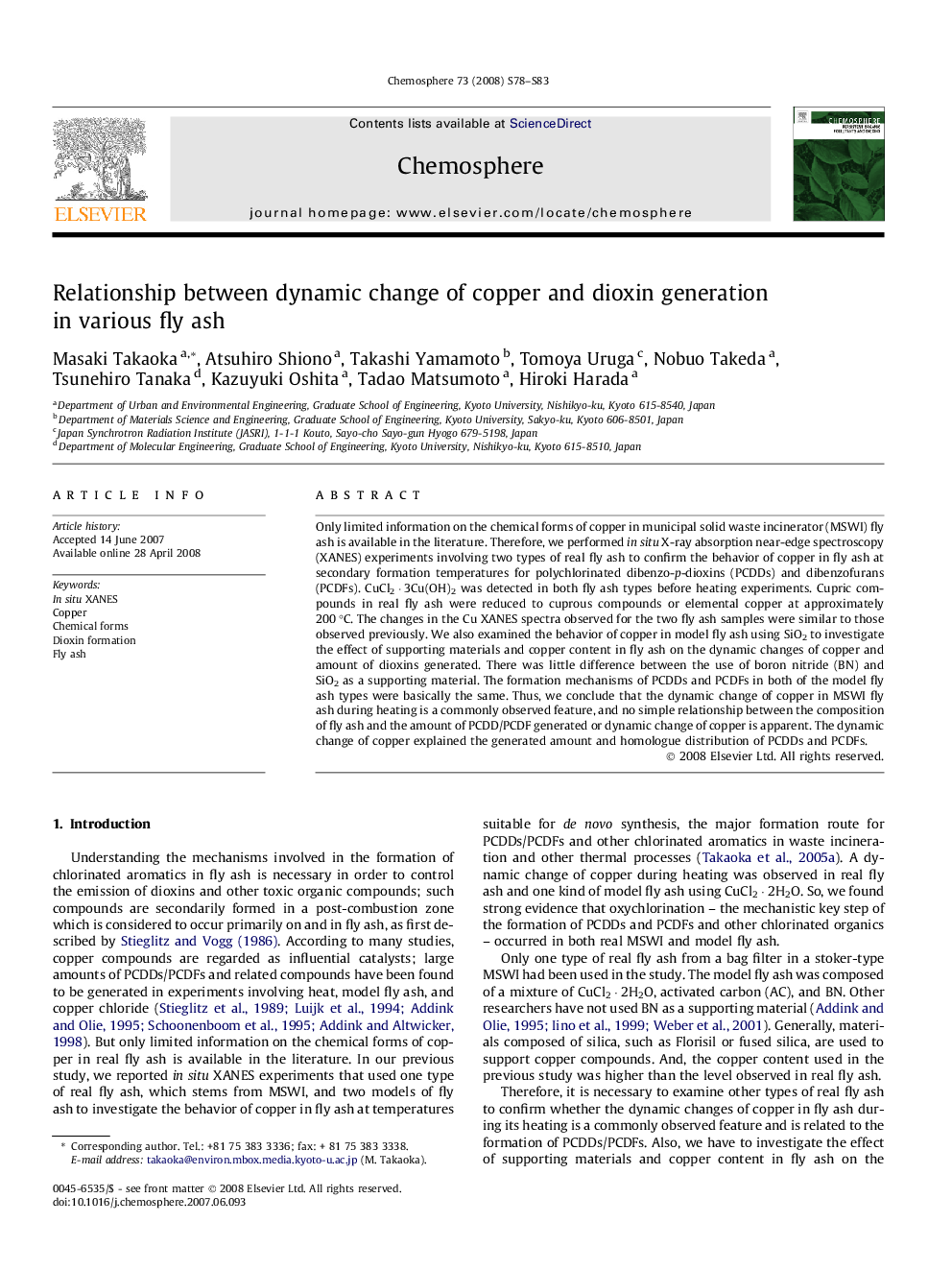| Article ID | Journal | Published Year | Pages | File Type |
|---|---|---|---|---|
| 4413855 | Chemosphere | 2008 | 6 Pages |
Only limited information on the chemical forms of copper in municipal solid waste incinerator (MSWI) fly ash is available in the literature. Therefore, we performed in situ X-ray absorption near-edge spectroscopy (XANES) experiments involving two types of real fly ash to confirm the behavior of copper in fly ash at secondary formation temperatures for polychlorinated dibenzo-p-dioxins (PCDDs) and dibenzofurans (PCDFs). CuCl2 · 3Cu(OH)2 was detected in both fly ash types before heating experiments. Cupric compounds in real fly ash were reduced to cuprous compounds or elemental copper at approximately 200 °C. The changes in the Cu XANES spectra observed for the two fly ash samples were similar to those observed previously. We also examined the behavior of copper in model fly ash using SiO2 to investigate the effect of supporting materials and copper content in fly ash on the dynamic changes of copper and amount of dioxins generated. There was little difference between the use of boron nitride (BN) and SiO2 as a supporting material. The formation mechanisms of PCDDs and PCDFs in both of the model fly ash types were basically the same. Thus, we conclude that the dynamic change of copper in MSWI fly ash during heating is a commonly observed feature, and no simple relationship between the composition of fly ash and the amount of PCDD/PCDF generated or dynamic change of copper is apparent. The dynamic change of copper explained the generated amount and homologue distribution of PCDDs and PCDFs.
